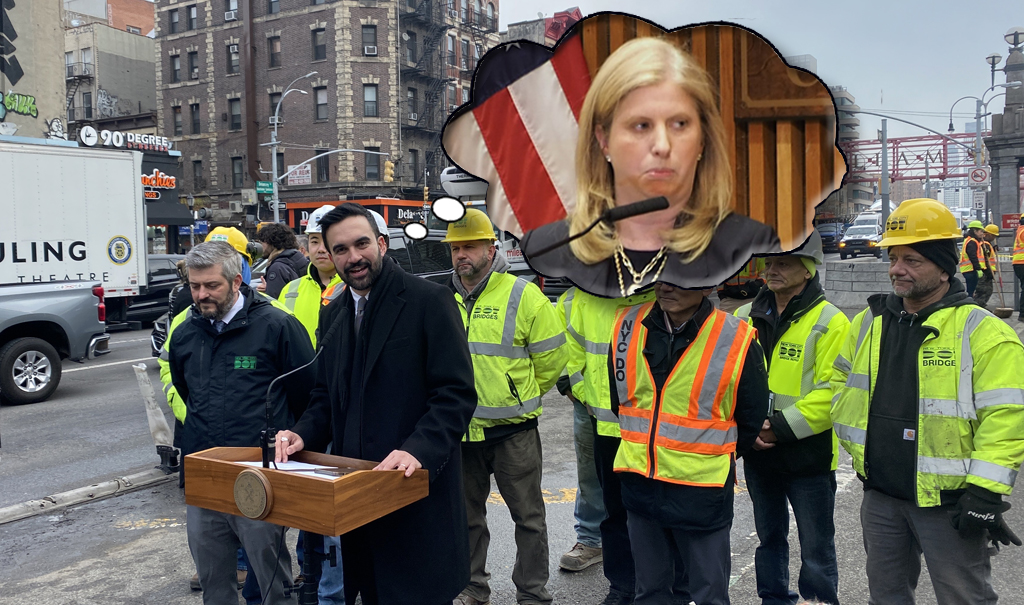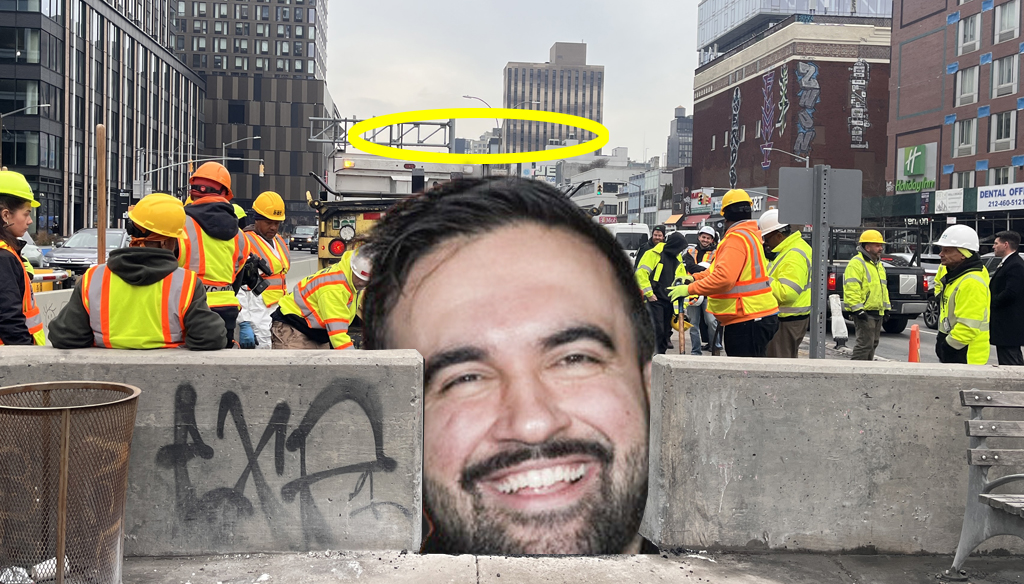
Sketches from an internal BRT Study depicting the three general types of stations: A) Major Station: Includes extended canopy with windscreens and seating. Icon and full platform pavement treatment. B) Standard Station: Shelter with Icon and full platform pavement treatment. C) Minimum Station: For locations with narrow sidewalks: Icon and platform edge strip only. Bigger image here.
In the urban transportation pecking order, New York City's 2.4 million daily bus riders may very well occupy the lowest rung. At rush hour, you can walk faster than a crosstown bus. Shelters, benches and maps are optional. Schedules are a joke. Buses rarely get their own lane, and when they do, there is usually someone parked in it. It is, perhaps, the most perverse example of New York City transportation dysfunction that a single guy in an SUV with Jersey plates can keep fifty people from getting to work on time.
New York City's buses are run by the Metropolitan Transit Authority. For years, the city has essentially ignored buses, treating them as "a state thing." Yet, the MTA's buses run on streets that are managed and controlled by New York City's Department of Transportation. There is much that the city can do to make buses run faster and better.
During his 2001 campaign mayoral candidate Michael Bloomberg promised to establish an express bus system on the East side of Manhattan. Five years later, and after two and a half years of study, the Department of Transportation today announced the five bus routes that would be piloted as a part of the city's first Bus Rapid Transit program. One corridor was selected in each borough. DOT Commissioner Iris Weinshall told the New York Times that "two of the routes would be in use by next fall, and plans call for the rest to be in use in 2008." The smart money says the Bronx will gets one of the first two routes and either Queens or Staten Island gets the other one.
So, what will Bus Rapid Transit look like in New York City? How will it work? Today's Times reports:
Stops would be spaced from one-half mile to a full mile apart. The bus lanes would be painted a special color, and the buses would get a distinctive paint job, to differentiate them from their pokier cousins. Cameras would be mounted on buses and bus stops to photograph trucks and cars blocking the bus lanes, so tickets could be sent to the vehicles' owners.
To help speed buses along, on some of the routes they will have devices that transmit their location to a computer system that controls traffic lights: a green light could be kept on a few seconds longer, or a red light could turn green a few seconds earlier, to let the buses pass. At some bus stops, passengers would pay their fare at sidewalk turnstiles rather than on the bus, to make boarding faster.
In other cities around the world, BRT has produced dramatic increases in bus speeds, reliability and ridership. Bogotá, Columbia is one of the biggest successes. BRT has been a key part of this city of seven million's rapid transformation from traffic-choked dysfunction to model of sustainable urban development. This is what Bogota's TransMilenio system looks like:

And here is a photo of the new Mobilien BRT system in Paris, France:

You will note one very significant difference between these two successful BRT system and the system being proposed for New York City. In Bogota and Paris, the buses are given their own, physically-separated right of way. While New York City's BRT system will be a significant advance over what we have now, the lack of physical separation has the potential to be a system-breaker. Without physical separation, that single guy in the double-parked SUV may still have the ability to delay the morning commute of 80 New Yorkers. Sure, Mr. SUV gets a $350 ticket (if he's not a government employee). You're still late for work.
DOT believes that it can maintain BRT's right of way through enforcement and technology rather than street design. The internal study document that I got a hold of says that bus lanes will be prominent and distinct but that "enforcement will be critical to the success of dedicated bus lanes, as their will not be any physical barriers." The study goes on to say:
DOT has commenced coordination with NYPD to enforce dedicated lanes. In addition, other technologies and treatments such as bus lane cameras, on-board bus cameras, effective pavement and sign markings are being explored. A joint traffmic management center is under construction, which will be coordinated effort among State DOT, City DOT and NYPD.





